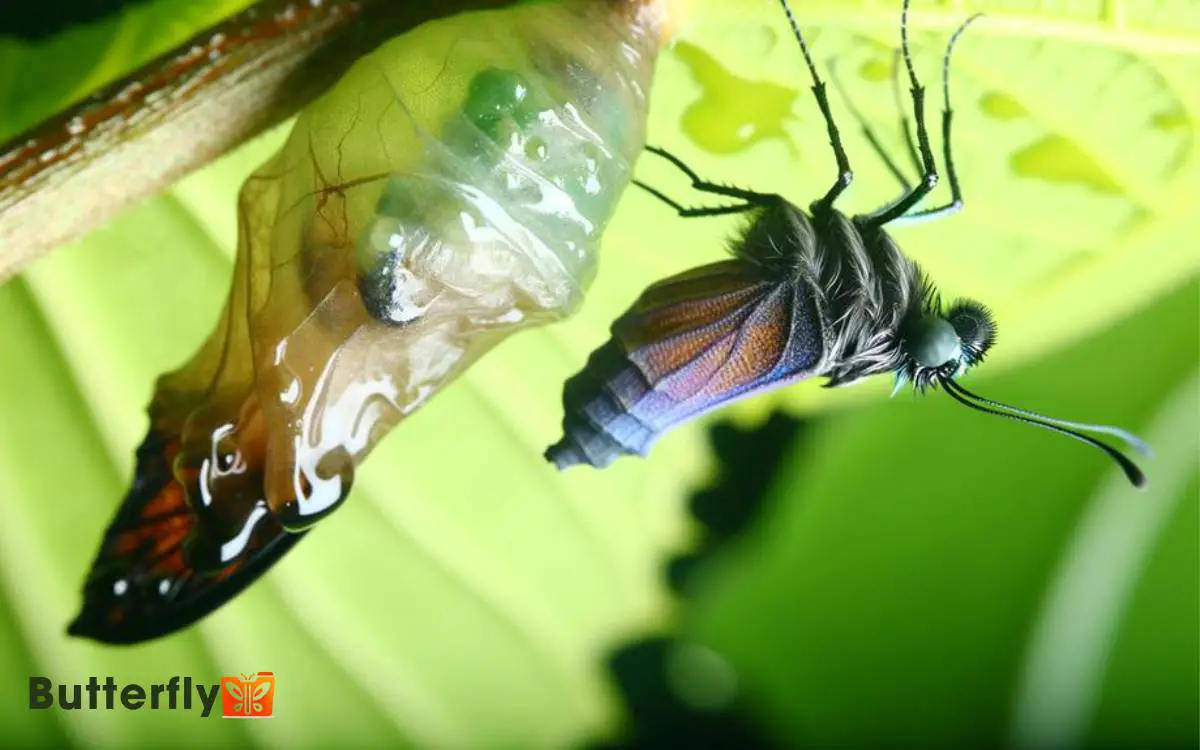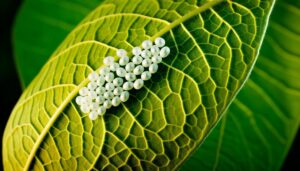Do Butterflies Bleed When They Hatch? Discover the Facts!
When butterflies hatch, they don’t bleed. Instead, they expel a reddish-brown substance called meconium. This fluid is a mix of waste from their pupal stage.
Hemolymph, the butterfly’s equivalent to blood, is pumped into their wings to help them expand and harden. The intricate vascular and tracheal systems support this process, ensuring proper wing development and function.
Observing the emergence can reveal how precise and fascinating this metamorphosis is. There’s much more to discover about the butterfly’s transformation and physiology.

Key Takeaways
The Butterfly Life Cycle
The butterfly life cycle consists of four distinct stages: egg, larva (caterpillar), pupa (chrysalis), and adult butterfly.
- First, the female butterfly lays eggs on host plants. These eggs are often tiny, round, and vary in color.
- When the egg hatches, the larva stage begins. As a caterpillar, it focuses on eating and growing, shedding its skin multiple times.
- Following this, the caterpillar enters the pupa stage, forming a chrysalis. Inside this protective casing, significant transformation occurs.
- Finally, the mature butterfly emerges, ready to start the cycle anew. Each stage is critical for the insect’s development, ensuring it reaches adulthood with the necessary attributes for survival and reproduction.
Understanding these stages is key to appreciating butterfly biology.
The Metamorphosis Process
After the caterpillar reaches its full size, it begins the remarkable process of metamorphosis within its chrysalis. Inside, the caterpillar’s body undergoes drastic changes. Its tissues break down into a nutrient-rich soup, which then reorganizes into the structures of an adult butterfly.
Specific cells, known as imaginal discs, guide the formation of wings, legs, and antennae. Hormones like ecdysone and juvenile hormone regulate these transformations, ensuring precise development.
You’ll notice that during this phase, the exterior of the chrysalis appears motionless, but internally, cellular activity is intense.
This process is crucial for evolving from a crawling larva to a flying adult. Understanding these changes highlights the intricate biological mechanisms that drive metamorphosis, preparing the insect for its next life stage.
Chrysalis to Butterfly
Emerging from the chrysalis, the butterfly undergoes a final transformation as it pumps hemolymph into its wings to expand and harden them. You’ll notice the butterfly hanging upside down, allowing gravity to assist in this important process.
Hemolymph, equivalent to blood in vertebrates, flows through the wing veins, causing them to unfurl and stiffen. This phase is essential for the butterfly’s ability to fly. The wings might appear wet and fragile initially, but within a few hours, they dry and become strong.
The butterfly also expels meconium, a reddish-brown waste product, often mistaken for blood. This natural process ensures that the butterfly is ready to set off on its journey, fully equipped for flight and survival.
Understanding Butterfly Physiology
Understanding butterfly physiology provides insight into their remarkable adaptations, such as the intricate vascular system in their wings that supports flight and thermoregulation.
You’ll find that hemolymph, a fluid analogous to blood, circulates through tubular veins in the wings, distributing nutrients and maintaining temperature.
When butterflies emerge from the chrysalis, they pump hemolymph to expand and harden their wings. This process is vital for their survival, allowing them to take flight efficiently.
Additionally, their tracheal system facilitates respiration, delivering oxygen directly to tissues. Sensory organs on their antennae and legs enable them to detect environmental cues, crucial for locating food and mates.
Understanding these physiological features highlights the complexity and elegance of butterflies’ adaptations to their environments. One fascinating aspect is the butterfly breathing process, which relies on a network of tiny tubes called tracheae to deliver oxygen directly to their tissues. This system allows butterflies to efficiently regulate their respiration without the need for lungs, further demonstrating their remarkable evolutionary design.
Myths and Facts
Debunking common myths about butterflies reveals fascinating truths about their biology and behaviors.
First, you might wonder if butterflies bleed when they hatch. They don’t. Instead, they release a red fluid called meconium, composed of waste materials accumulated during metamorphosis.
Another myth is that touching a butterfly’s wings will prevent it from flying. While handling can damage delicate scales, it won’t necessarily cripple flight.
Additionally, butterflies don’t have blood but hemolymph, which circulates nutrients and hormones. They also don’t taste with their mouths but with their feet, using chemoreceptors to detect sugars.
Understanding these facts enriches your appreciation of these complex, delicate creatures and dispels common misconceptions.
Conclusion
You might notice a red liquid when butterflies hatch; it’s not blood, but meconium, a byproduct of metamorphosis. Coincidentally, the vibrant wings unfurl just as this harmless fluid drips away, symbolizing new life.
Butterflies lack veins; their open circulatory system uses hemolymph instead of blood. Understanding these details dispels myths and reveals nature’s intricate design.
So, next time you see a butterfly emerge, you’ll appreciate the precise beauty of its transformation.





